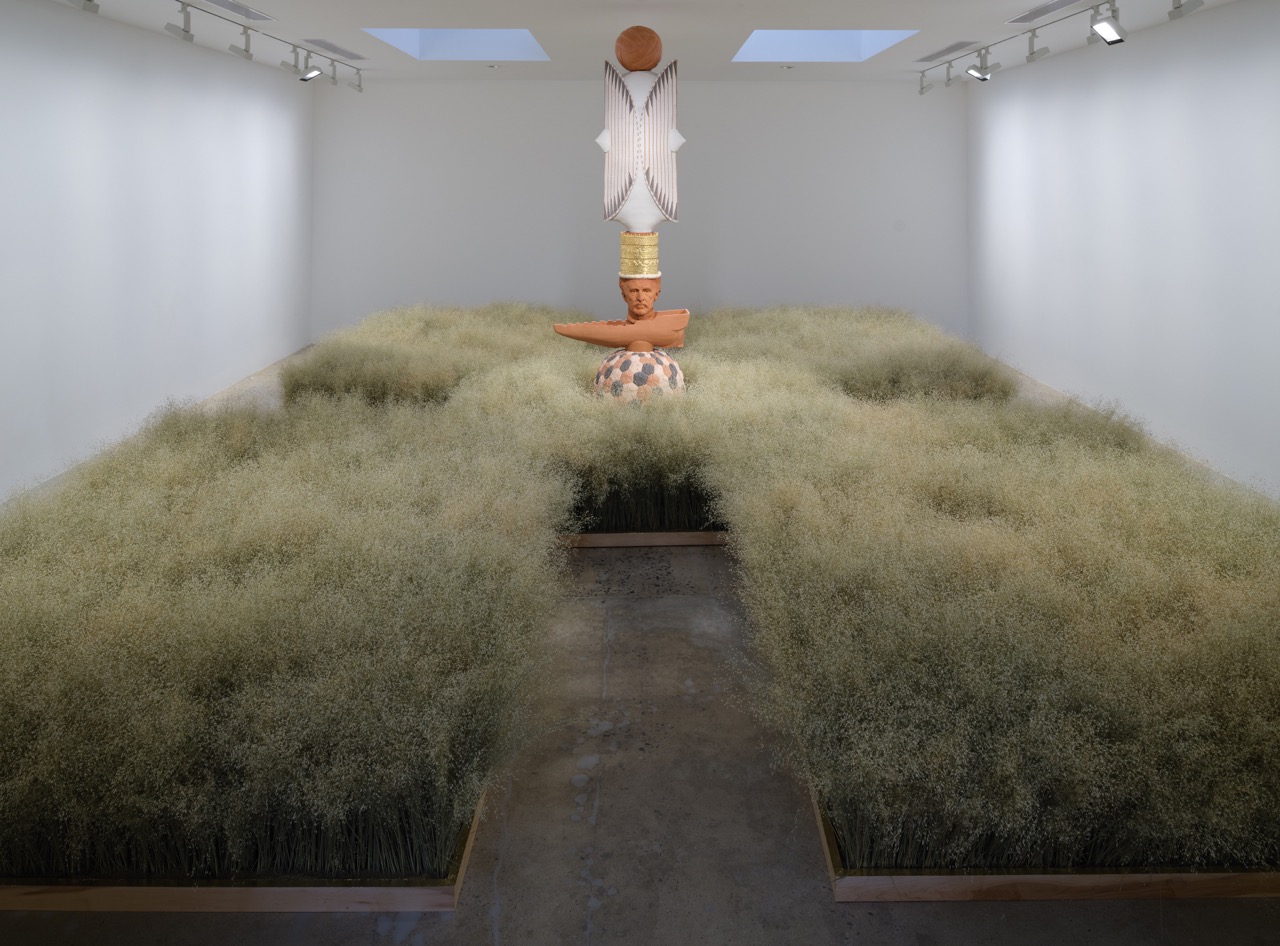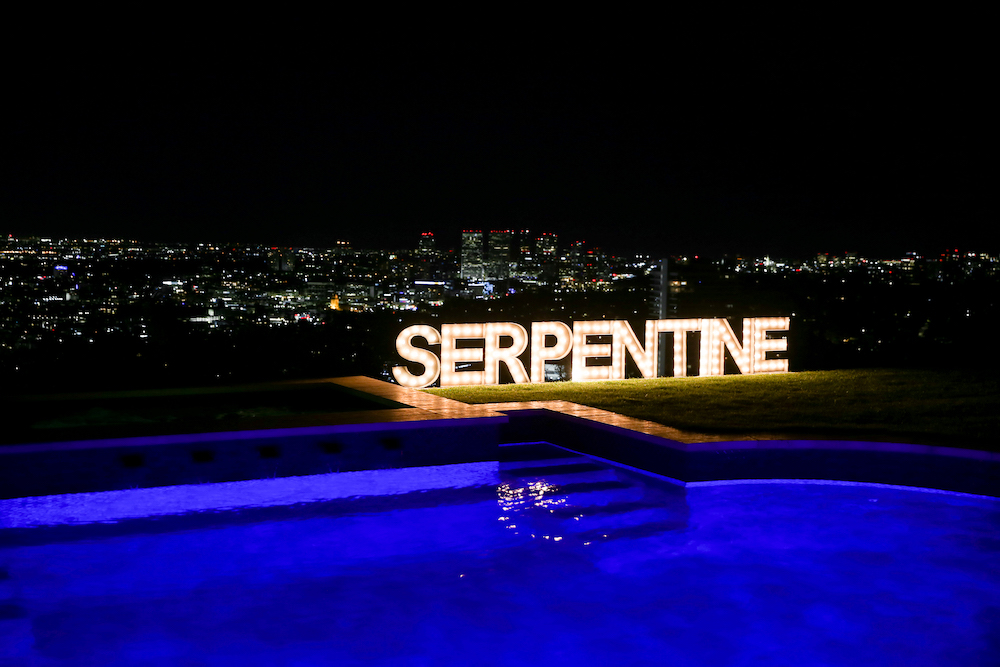Regen Projects was founded in 1989 in Los Angeles and is one of the longest-running galleries in the city. Its success is measured not just by longevity, but by the high quality of its exhibitions, its maintaining of its roster of artists who have been there since the beginning (Matthew Barney, Catherine Opie, etc.), and its reputation among the L.A. art community. The gallery’s president, Shaun Caley Regen, has been described by people like Jeffrey Deitch as running Regen Projects less like a business and more like a traditional gallery, building and articulating a vision. This spring, Regen showed a new photographic series by James Welling entitled “Choreograph” (through March 26) and work by Lawrence Weiner (April 2–May 7). When Whitewall spoke with her, she told us she had just visited Weiner’s New York studio and was excited to see how he plans a more classical show, not relating to the architecture of the gallery as he has in past exhibitions.
WHITEWALL: We read a recent interview where you said that working at the gallery, starting in 1989, allowed you to stop writing, and that was a relief, as writing was so hard. But we also imagine running a gallery for over 25 years is pretty difficult! What made it better than writing for you? Where do you find your ease in running a gallery?
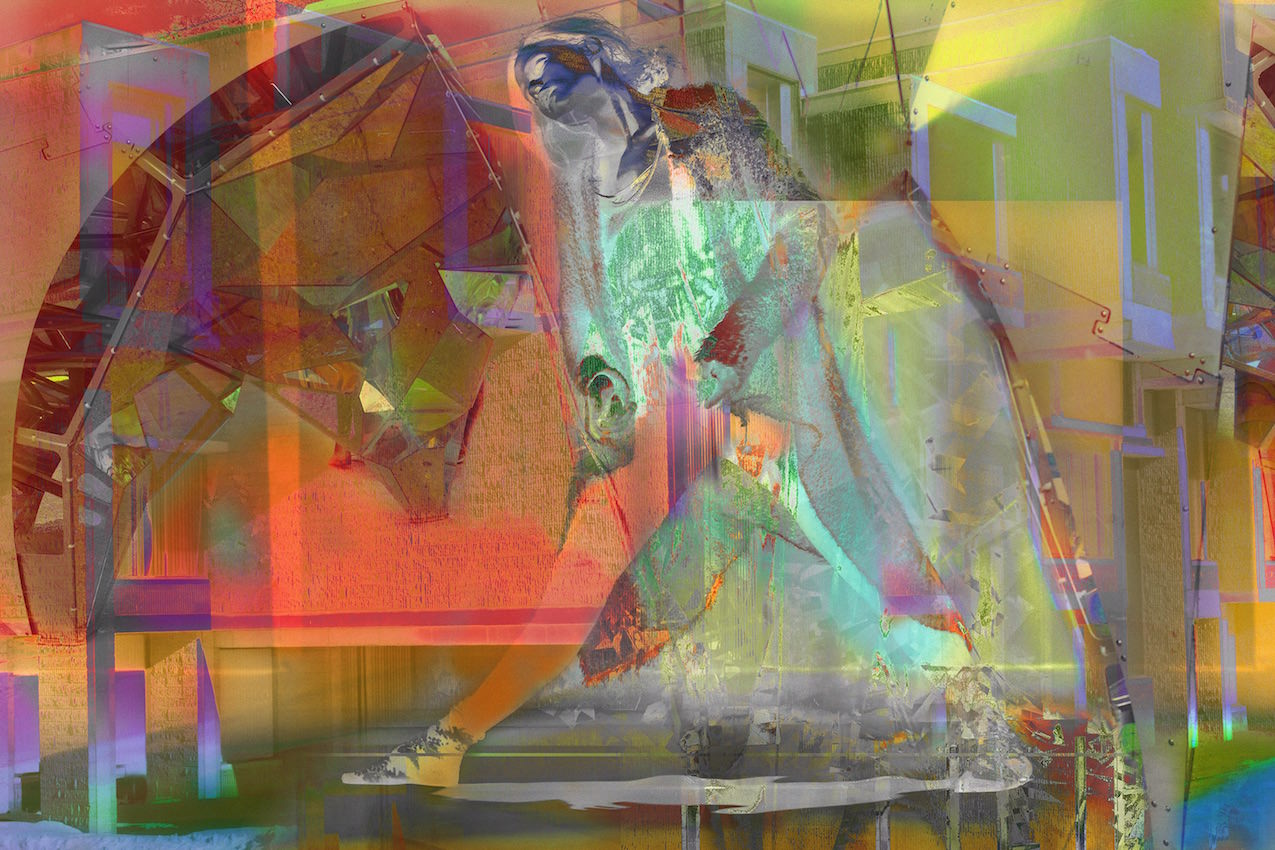
James Welling
SHAUN CALEY REGEN: Writing was difficult for me because I have such immense respect for any creative process. If you have something to say, in print, in art, in film, or in any media, there is a lot of pressure to convey it well, with intelligence and substance. Running a gallery is also a challenge, but a fun one, and one that is eternally optimistic and collaborative. Artists are visionaries, and to be able to present, occasionally produce, and find a good home for amazing art and ideas is a true pleasure.
WW: You’ve been the first to show the work of artists like Matthew Barney and Catherine Opie, and have recently taken on younger artists like Lizzie Fitch and Ryan Trecartin. What are some of the challenges of showing new, often demanding work? Does it excite you?
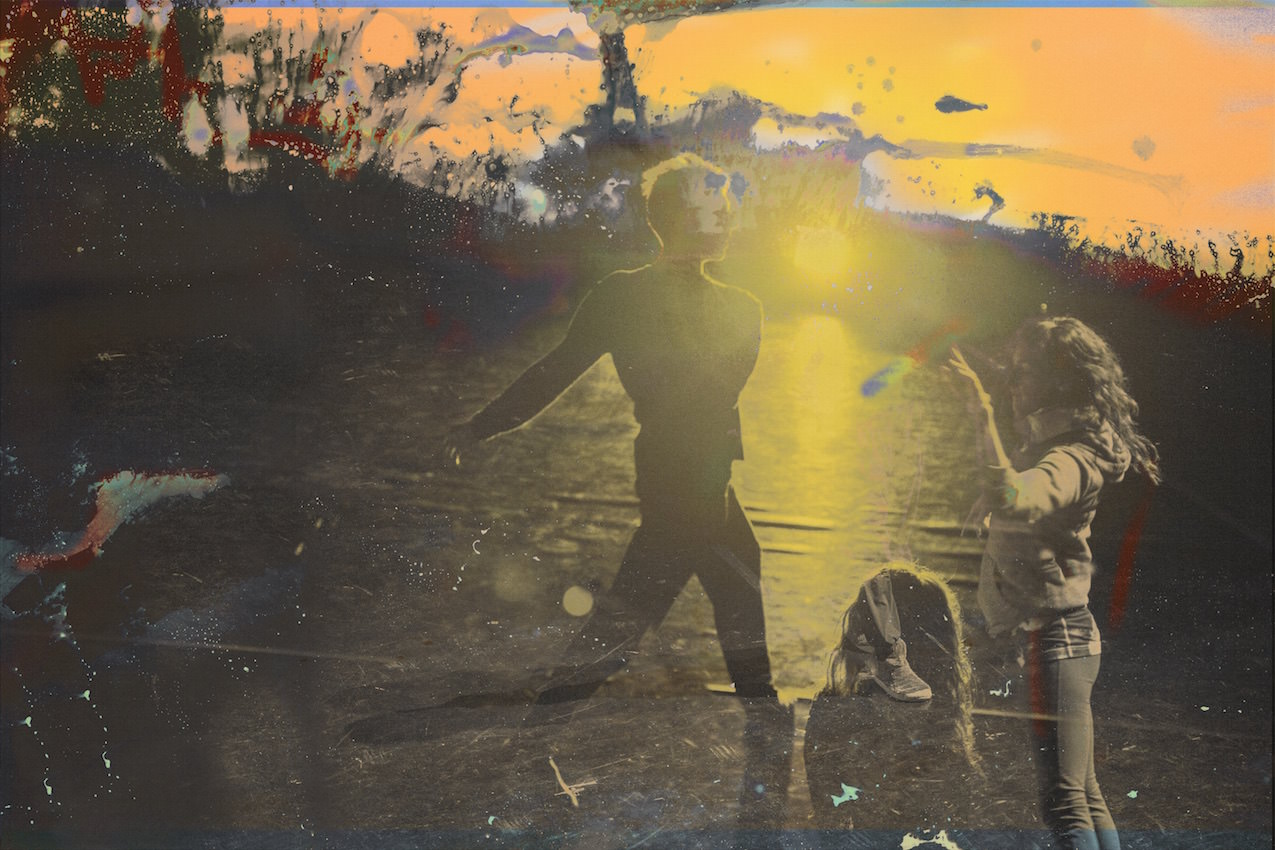
9812
SCR: It is incredibly rewarding to work with artists early in their careers and to develop a long history with them. Lizzie Fitch and Ryan Trecartin have such a unique vocabulary, and one that very much reflects their generation. Matthew Barney introduced an entirely new set of parameters to the art world in 1991 with his use of materials and narrative. Catherine Opie’s early photographs engaged a new royal portraiture for the transgendered, lesbian, and S/M community, documenting a culture that has a lot more visibility today than it did then. I’m not sure how much of a risk it is to present new work, but it is tremendously gratifying to be excited by an artist’s work and have that belief validated by others.
WW: A lot of the artists you first showed still have a relationship with the gallery. What’s most important for you in nurturing the careers of the artists you work with, and your relationship with them?
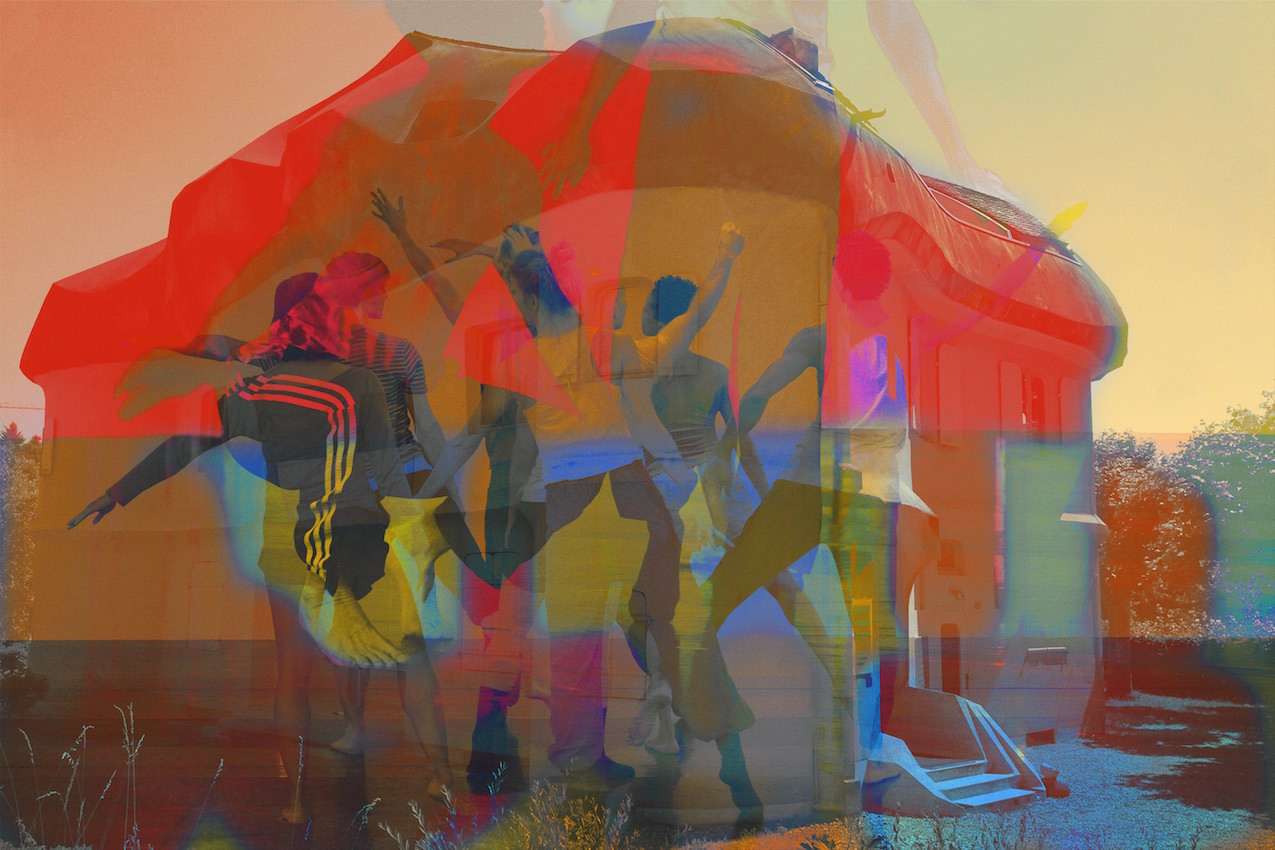
2016
SCR: I think gallerists are very privileged to have a long view of an artist’s career. There are shifts and progressions in every artist’s oeuvre, and being able to see these developments and maintain a dialogue around them is an important aspect of what we do. Most of the time we have had front-row seats as to how our artists’ work has evolved. To me, this is the most engaging aspect of what I do. I am continually surprised and in awe watching so many of our artists go from strength to strength. We just completed a book with Liz Larner in conjunction with her ceramic show at the Aspen Art Museum in February. To track Liz’s singular vision through her work and to see how she articulates her intention is particularly moving. Liz and Lawrence Weiner were the first two artists of the gallery when we opened in 1989. In many ways and after so many years, the gallery and the artists have grown up together, and these are wonderful people, people I am honored to call friends.
WW: What are the connections you see in your artists?
SCR: As I mentioned before, I really like content. And I really like ideas. Art lives on, and so artists have a certain kind of immortality and responsibility. You know immediately, when you are in front of an artwork, or with an artist in their studio, which ones truly ascribe to their vision. Wolfgang Tillmans briefly taught at UCLA many years ago, and very concisely told his students that if they had nothing to say, they had no business making art. I am paraphrasing, and hope I am not citing Wolfgang out of context, but I basically ascribe to that thought. The medium, the practice, and even the worldview don’t matter, but the conviction and the message do. With that said, I can assure you that the gallery does not have any artists who are members of the Tea Party.
WW: You’ve talked about L.A. as a production center, rather than a commercial center. Do you see that changing or evolving, and if so, how?
SCR: L.A. is in a golden moment right now. There is more interest in art, and more currency in art than ever. Artists are moving here from all over the world. There are lines wrapping around the block to see the Broad Museum; the campus Michael Govan has built at LACMA is full of people; the Hammer has an incredibly well-attended program and lecture series; and MOCA is reinvigorated once again. Great collections are being built in Los Angeles and there is more interest, cross-generationally, in being engaged in art.
The commercial capital of the art world is still New York, and there are tremendous philanthropic cities like San Francisco and Chicago that set a shining example for what I hope Los Angeles will one day become.
WW: You’ve said that one of the things you like about L.A. is that there is always a “sense of becoming.” How do you think that affects your approach within the gallery? There must be a sort of freedom in that . . . Does it allow you to take more risks, for instance?
SCR: I do like being optimistic. When we put on an exhibition, it is both in dialogue with Los Angeles, and our national and international audience. We just had an extraordinary John Bock installation and film at the gallery, which many people visited. It was an incredible use of the space, like a 3-D infinite drawing that was entirely transportive. It was our most ambitious John Bock show to date, and an artist we have been working with since 2002. One of the decisions to show John Bock from that time was the history of installation and performance art in Los Angeles, and John’s contribution to that dialogue from Germany.
I don’t know if this constitutes risk-taking, but I like to think that every show will be greater than the next, and that each artist will have the freedom to present their work in a dialogue with previous shows, whether their own, and/or with the other artists’ exhibitions at the gallery. The risk I think you are referring to is that we try to keep commercial constraints out of the decisions of the program.
WW: I’ve always been curious about Los Angeles collectors, who seem historically quite private. How would you describe the culture of collecting in Los Angeles? Is there a new collector group coming up?
SCR: There are always new people interested in art. And it seems unprecedented that so many amazing international collectors are buying houses here. I hope they will become invested in the cultural fabric of the city.
WW: Having been around for over 25 years, how would you describe the intersection of Hollywood and contemporary art? It seems like there is a lot of attention placed on that recently, and I often wonder if it’s warranted.
SCR: I hope that Hollywood continues to realize the importance of art, and that some of these collections will have the same high standards as the great collectors we know and love. I was recently at the Art Institute in Chicago for the opening of the Stefan Edlis and Gael Neeson gift of 44 works to the museum. It was so apparent that a truly great institution can only exist with generous patrons and unprecedented philanthropy. It would be amazing if some of these collections would find their way to the museums here. It would be wonderful if the Hollywood community could become a great philanthropic support to the more general culture of the city.
This article is published in Whitewall‘s spring 2016 Art Issue.






